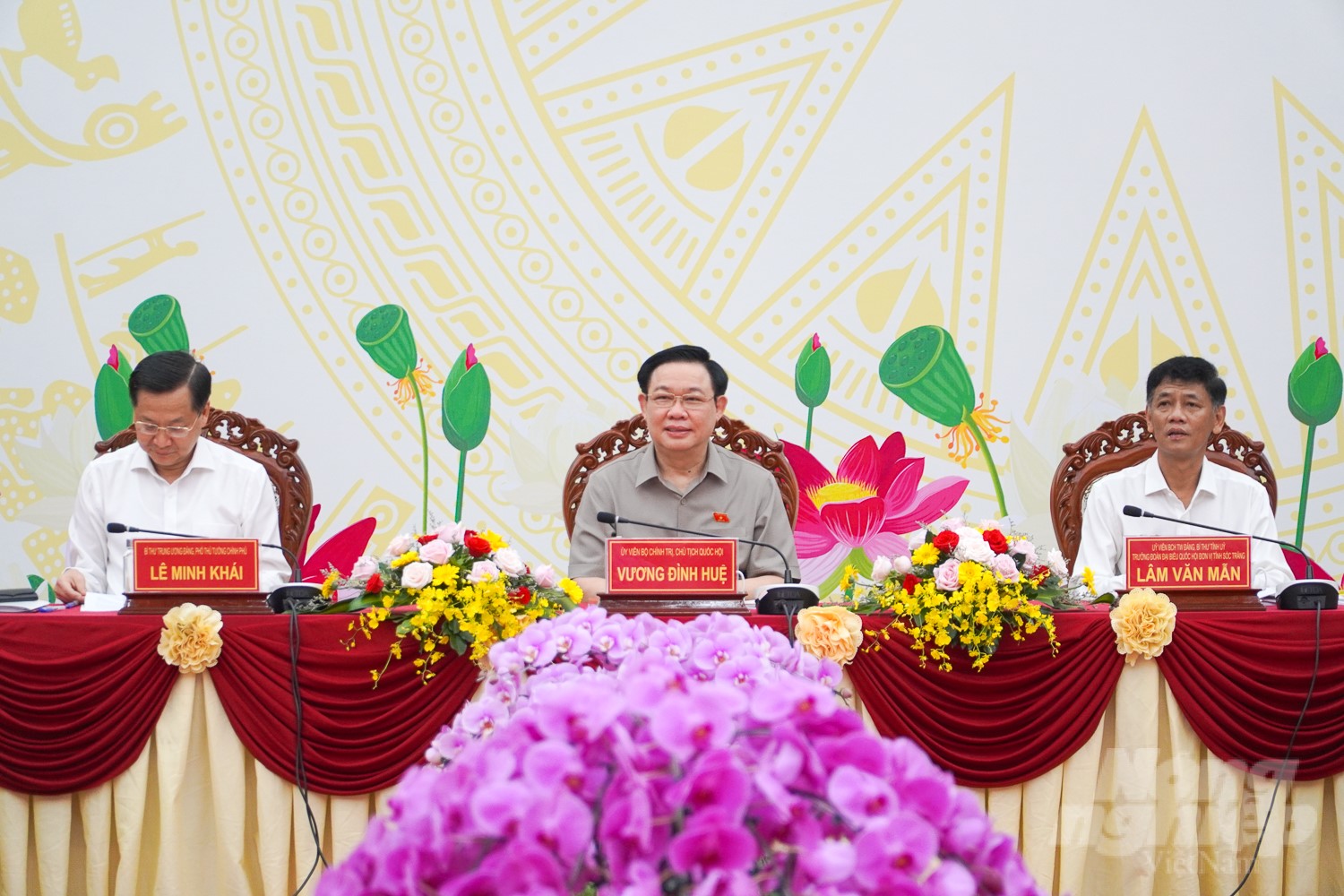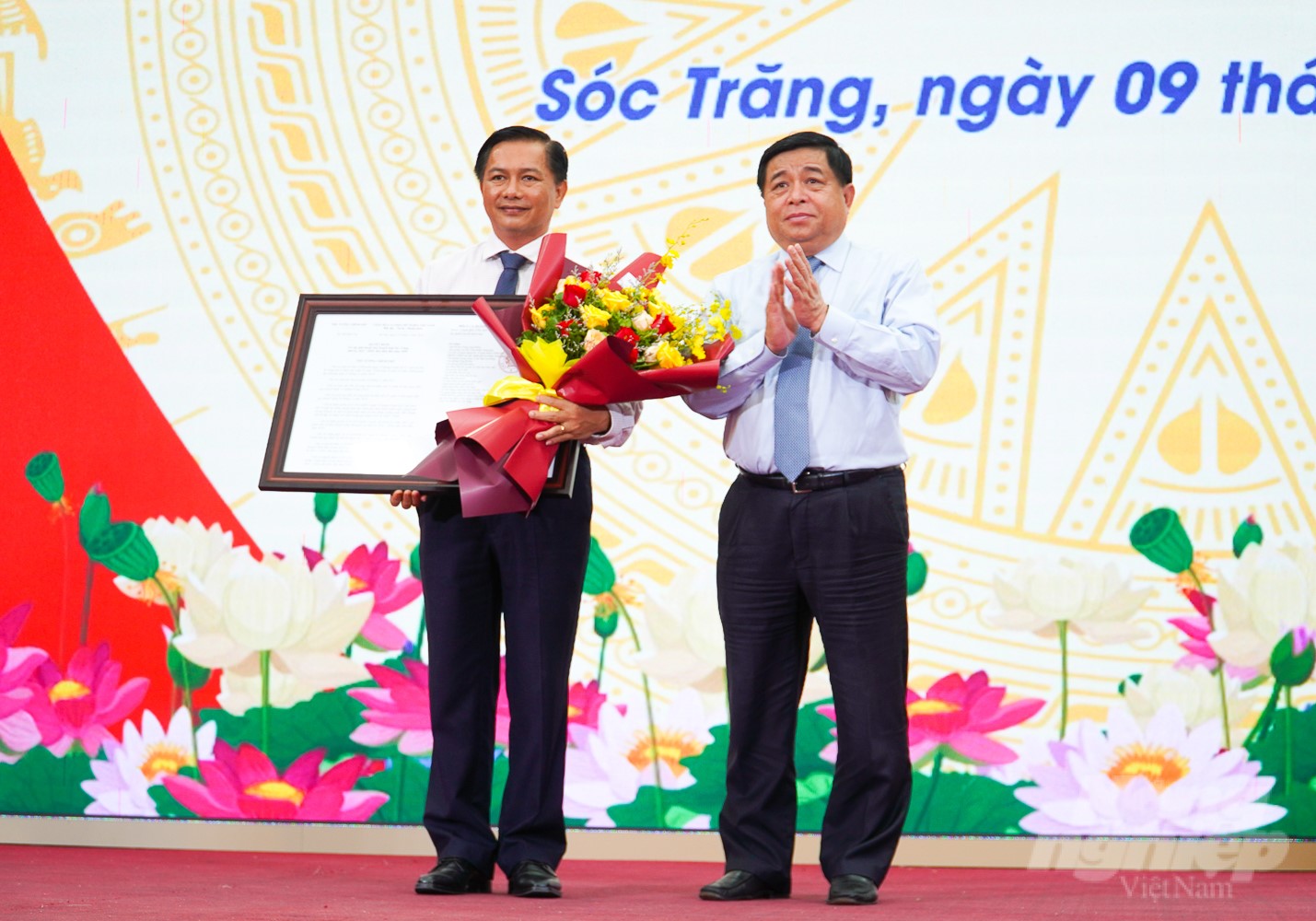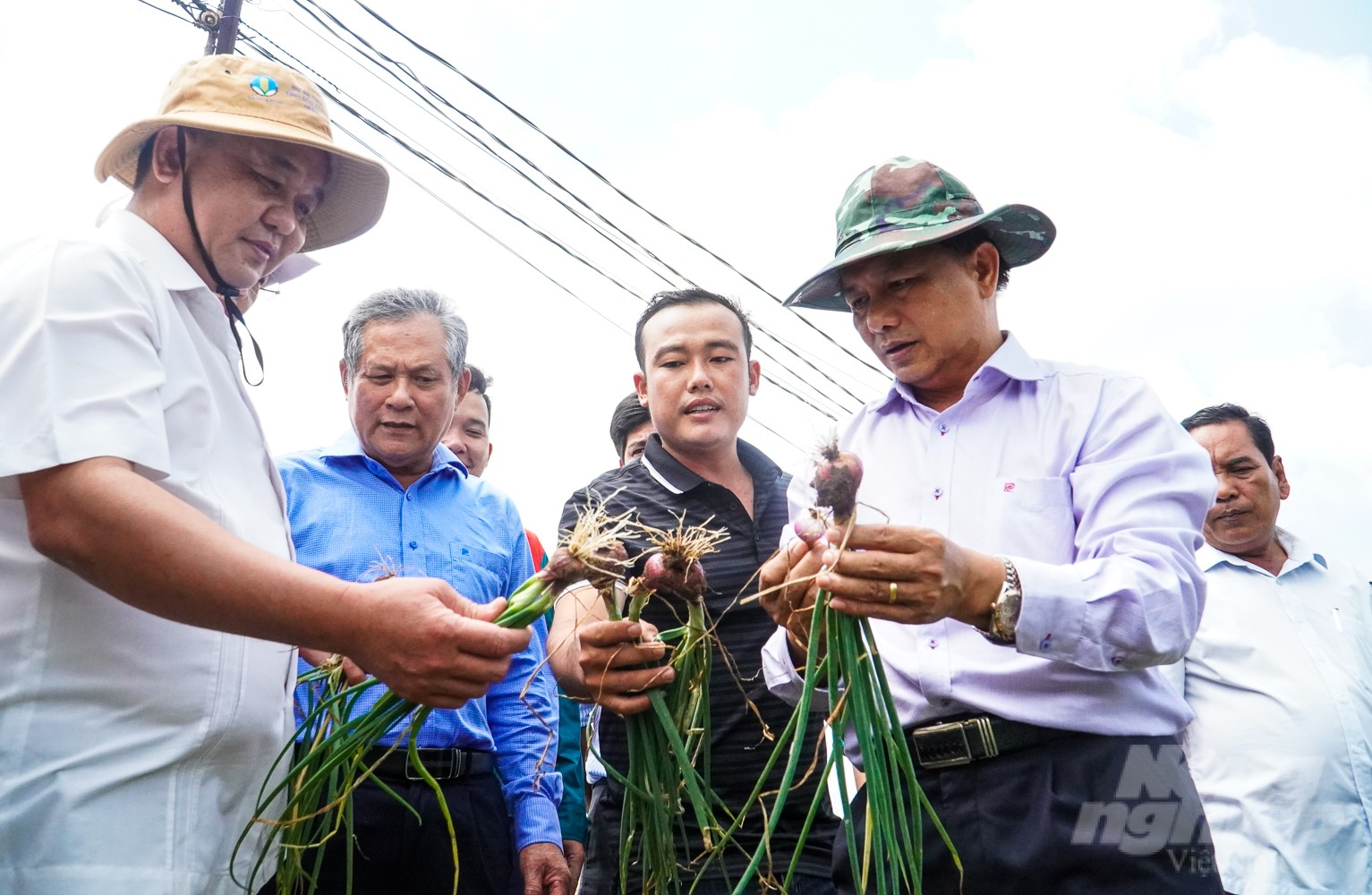November 27, 2025 | 18:51 GMT +7
November 27, 2025 | 18:51 GMT +7
Hotline: 0913.378.918
November 27, 2025 | 18:51 GMT +7
Hotline: 0913.378.918
On October 9, the Soc Trang Provincial People's Committee held a conference to announce the Soc Trang Provincial Planning for the period 2021–2030, with a vision to 2050. The conference was attended by Politburo member and Chairman of the National Assembly Vuong Dinh Hue; Secretary of the Party Central Committee and Deputy Prime Minister Le Minh Khai; together with representatives of National Assembly agencies, leaders of Ministries and central and local branches, and the business community and investors in Soc Trang province.

Politburo member and Chairman of the National Assembly Vuong Dinh Hue attended the conference to announce the Soc Trang Provincial Planning for the period 2021–2030, with a vision to 2050. Photo: Kim Anh.
Deputy Prime Minister Le Minh Khai determined that planning plays an extremely important role in identifying development thinking, vision, and plans and organizing development space. At the same time, planning helps create new opportunities, production capacity, and value for each country, each region, and each locality in the planning period.
As for Soc Trang province, Provincial Planning is the basis for the locality to continue implementing development strategies and orientations and closely link with Mekong Delta provinces and cities, according to Resolution 13 of the Politburo. At the same time, it is necessary to connect and unify Provincial Planning with the National Plan and overcome limitations overlapping with previous plans.

Deputy Prime Minister Le Minh Khai determined that Soc Trang Provincial Planning is the basis for the locality to implement development strategies and orientations and closely link with Mekong Delta provinces and cities. Photo: Kim Anh.
Soc Trang is the 1/13 provinces and cities in the country and 2/13 provinces and cities in the Mekong Delta region that were approved for planning by the Prime Minister. This is the basis, orientation, and premise for the province to realize its development aspirations.
Assessing the potential and advantages of Soc Trang province, Deputy Prime Minister Le Minh Khai affirmed that this is a major place for rice production, aquaculture, and seafood exports in the country. Besides, the locality is a unique cultural intersection between three ethnic groups, including Kinh, Chinese, and Khmer. Soc Trang has all the potential and advantages for socio-economic development, especially the development of high-tech agriculture, the ocean economy, aquaculture exploitation, forestry, clean energy, etc.
However, the locality still has many difficulties and challenges and has not fully exploited its potential and advantages. Typically, the economic growth rate has not reached the set target; infrastructure is still weak; investment resources are lacking; the competitiveness index is still low; and investment attractiveness is not high. On the other hand, many projects are given priority to call for investment but fail to attract businesses, and rural people's lives are still difficult. Thus, the Deputy Prime Minister has requested that Soc Trang province urgently deploy the planning, which focuses on five key tasks.

Minister of Planning and Investment Nguyen Chi Dung awarded the Decision approving Soc Trang Provincial Planning for the period 2021–2030, with a vision to 2050. Photo: Kim Anh.
First, Soc Trang needs to strongly improve the business and investment environment, focusing on creating a breakthrough in reforming administrative procedures and building e-government. Create an open, transparent, and equal business and investment environment to attract investors. At the same time, timely overcome difficulties and obstacles for businesses, from the time of researching and planning investment projects to the production and trading processes. Importantly, strictly control environmental impact assessments for projects.
Second, Soc Trang needs to mobilize maximum investment resources to develop infrastructure. In particular, priority is given to investing in transport infrastructure with strategic significance in connecting Soc Trang with provinces and cities nationwide and internationally.
Third, as for the project to develop Tran De seaport into a special port, an important gateway to the Mekong Delta region, the Deputy Prime Minister requested that Soc Trang province coordinate with the Ministry of Transport to urgently complete and submit it to authorities for approval to call for investors and synchronize transport infrastructure.
Fourth, the Deputy Prime Minister asked the locality to strengthen training for staff, especially the force involved in promotion, investment support, and business development activities. Promote research, application, and transfer of scientific and technical advances to production.
Finally, it is necessary to focus on arousing and promoting traditional cultural and historical values. Care for beneficiaries of social welfare, families with revolutionary contributions, and vulnerable people in society in the spirit of “leaving no one behind”.
Previously, on August 25, 2023, the Prime Minister issued Decision No. 995 approving the Soc Trang Provincial Planning for the period 2021–2030, with a vision to 2050 on the basis of the National Master Plan approved by the National Assembly.
Of which, Soc Trang strives to become a well-developed province of the Mekong Delta region by 2030, with the development of the industry, trade, and services industries and a modern and sustainable agriculture. Form a seaport off the Tran De estuary and have a synchronous and gradually modern infrastructure system. Besides, the urban system develops in a green, smart, and sustainable direction and has enough capacity to adapt to climate change.

According to Soc Trang Provincial Planning, the agricultural sector is focused on developing in an ecological, organic, circular, and low-carbon emission direction. Photo: Kim Anh.
Regarding the agricultural sector, this locality aims to develop ecological, organic, circular, and low-carbon agriculture. Apply high technology associated with processing, preservation, brand building, consumption markets, and ecotourism.
Form areas specializing in growing key and strong commodities of the province, such as rice, Vinh Chau shallot, fruit trees, medicinal herbs, beef cattle, dairy cows, poultry, brackish water shrimp, giant freshwater prawns, Artemia, etc.
Regarding vision to 2050, Soc Trang Provincial Planning determines to make the locality a driving force development area of the region associated with the development of Tran De seaport. At the same time, become a province with a well-developed economy in the country, operating according to the methods of digital government, digital economy, and digital society, with smart manufacturing and service industries and a circular economy.
Translated by Huyen Vu Thu

(VAN) After 30 years, both sides identified strategic areas of cooperation: sustainable production, increasing coffee value and training for farmers.
/2025/11/27/4910-4-164708_294.jpg)
(VAN) On the afternoon of November 27 in Beijing, Minister of Agriculture and Environment Tran Duc Thang held a working session with several major Chinese enterprises operating in the agriculture and environment sector.

(VAN) The Department of Animal Health issued a provisional guideline requesting local authorities to increase surveillance, collect samples for testing, and conduct epidemiological investigations according to the established procedure.

(VAN) The United Nations recommends that Vietnam utilize data and artificial intelligence to enhance early disaster warnings and reduce GDP losses by 3.2% in the context of climate change.

(VAN) On the morning of November 27 in Beijing, Minister Tran Duc Thang and the Deputy Commissioner General of the General Administration of Customs of China signed a protocol on fresh jackfruit exports.

(VAN) As floodwaters recede, a vast network of irrigation works across eastern Gia Lai is emerging in a state of severe disrepair, with extensive damage demanding urgent restoration ahead of the 2025-2026 winter-spring cropping season.

(VAN) The conference reviewing three years of implementing Decision 911 identified the need to prioritize improving marine environmental quality and promoting sustainable fisheries development.